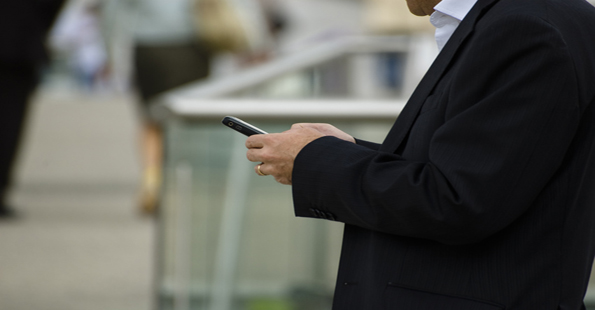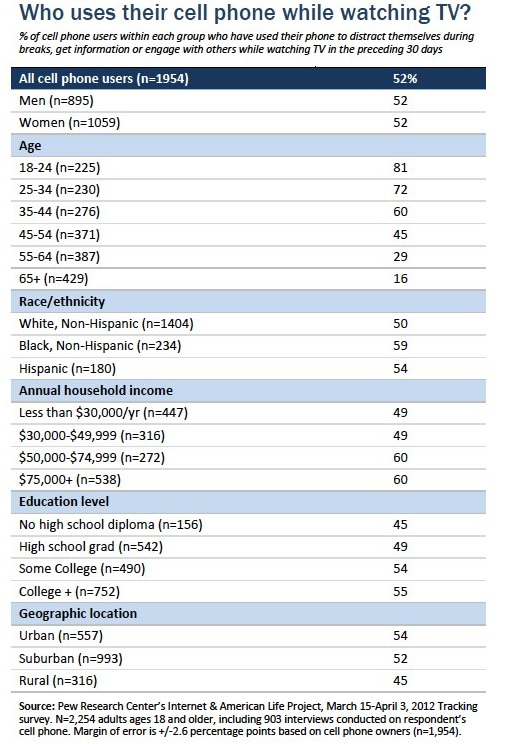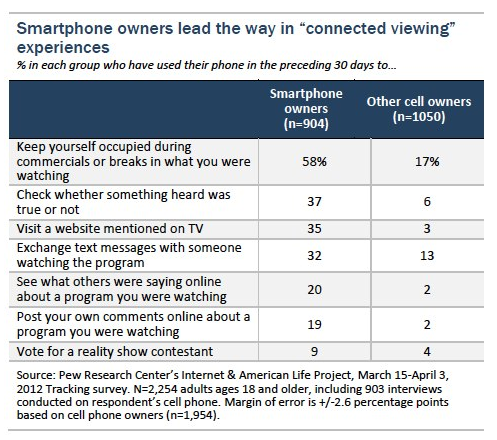veilles / 23 Juil 2012
The Rise of the “Connected Viewer”

Television’s solitary screen is being supplemented by multi-screen interactivity. Half of all adult cell owners (52%) have used their phones recently for engagement, diversion, or interaction with other people while watching TV. The Pew Research Center’s Internet & American Life Project measured the prevalence of these multi-screen viewing experiences by asking the 88% of American adults who are cell owners whether they had used their phone to engage in several different activities while watching television in the 30 days preceding an April 2012 survey. We learned that:
38% of cell owners used their phone to keep themselves occupied during commercials or breaks in something they were watching. 22% of cell owners used their phone to check whether something they heard on television was true or not.
6% of cell owners used their phone to vote for a reality show contestant. Three more questions were asked of the 57% of cell owners who download apps, use the internet, or use email on their phones:
35% of cell owners who use the internet, email or apps on their phone used their phone to visit a website that was mentioned on television (that works out to 20% of all cell owners).1 20% of cell owners who use the internet, email or apps on their phone used their phone to see what other people were saying online about a program they were watching (that works out to 11% of all cell owners). 19% of cell owners who use the internet, email or apps on their phone used their phone to post their own comments online about a program they were watching (that works out to 11% of all cell owners). In addition, 29% of cell owners who use text messaging have used their phone recently to exchange text messages with someone else who was watching the same program in a different location (since 79% of cell owners use text messaging, that means that 23% of all mobile users have done this).
Taken together, that works out to 52% of all adult cell owners who are “connected viewers”—meaning they took part in at least one of these activities in the 30 days preceding our survey.2 Young adults in particular stand out for their embrace of multi-screen viewing experiences, as some 81% of mobile owners ages 18-24 reported using their cell phones during televised programming in the preceding 30 days. Other demographic differences in “connected viewing” include:
Cell owners living in households earning ,000 per year or more are more likely to participate in interactive television experiences than those in households with lower annual incomes, and those with at least some college experience are more likely to do so than those who have not graduated high school. African American cell phone owners participate in connected viewing experiences at a somewhat greater rate than their white counterparts (59% vs. 50%), and urban residents are more likely to do so than those living in rural areas.
Along with these demographic differences, smartphone owners use their devices to interact with televised content at far higher rates than owners of more basic cell phones. Fully 74% of smartphone owners reported using their devices in one way or another while watching television in the preceding 30 days, compared with 27% of non-smartphone owners.


